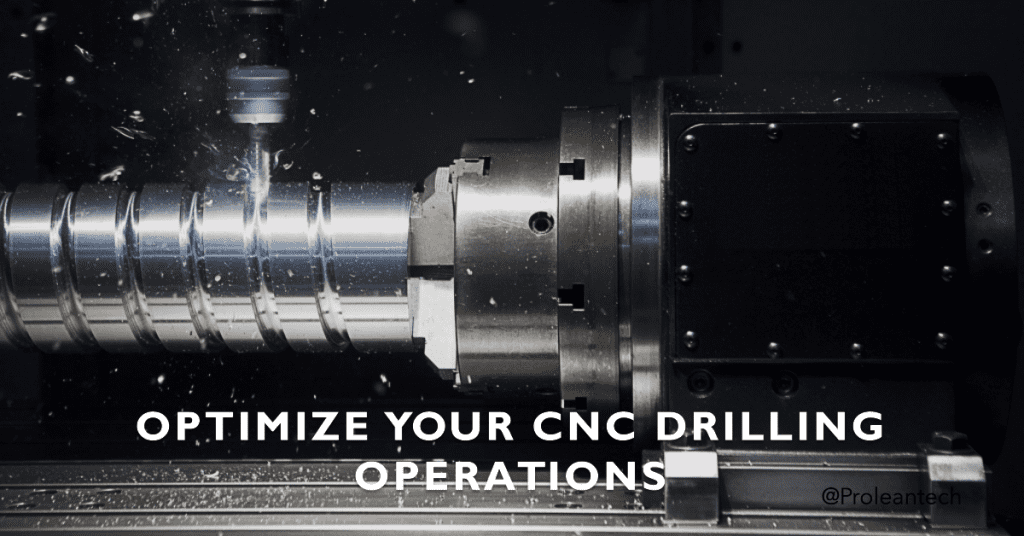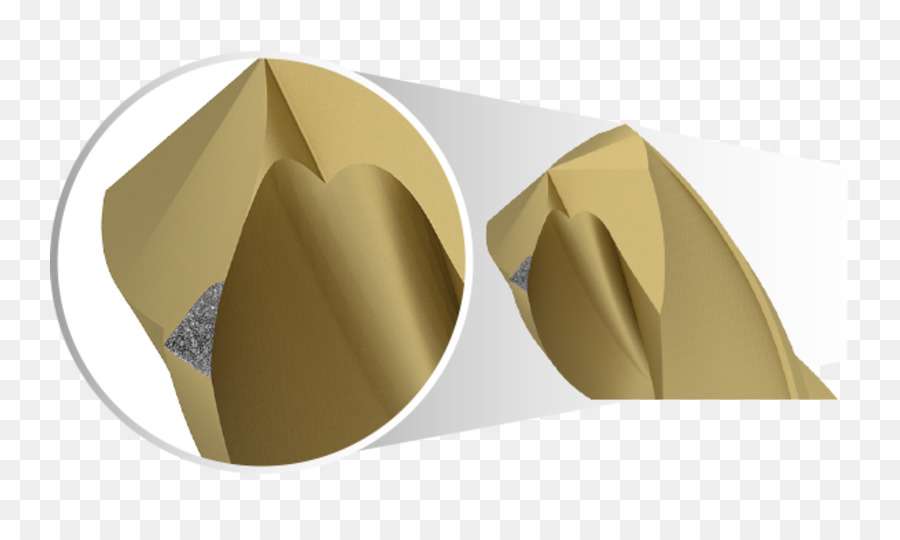
CNC drilling operations are a fundamental part of modern manufacturing, allowing for precision hole-making in various materials. However, to achieve optimal results and maintain efficiency, it’s crucial to optimize drilling processes and minimize tool wear.
This article explores practical advice on optimizing CNC drilling operations and reducing tool wear, ensuring higher productivity and better results.
Importance of Feeds and Speeds on Performance

Wear a drill-bit
Feeds and speeds play a critical role in determining the performance and longevity of CNC drilling tools. Correct feeds and speeds ensure efficient material removal, minimize heat generation, and reduce tool wear.
The following factors affect the feeds and speeds of a CNC drilling process;
| Factors | Description |
|---|---|
| Material properties | The workpiece material’s hardness and machinability directly impact the selection of appropriate feeds and speeds. |
| Tool material and geometry | The cutting tool’s material and design, such as flute length and helix angle, influence the optimal feeds and speeds for a given operation. |
| Machine capabilities | The rigidity, spindle speed, and power of the CNC machine must be considered when determining feeds and speeds. |
| Coolant application | The type and effectiveness of the coolant used can impact the optimal feeds and speeds, as coolant helps reduce heat and improve chip evacuation. |
How to determine the feeds and Speeds for CNC drilling?
To determine the optimal feeds and speeds for your specific operation, consult tool manufacturer recommendations, start with conservative settings and make adjustments based on performance, and monitor tool wear and adjust feeds and speeds accordingly.
Consulting tool manufacturer recommendations can serve as a starting point for determining the optimal feeds and speeds for your specific operation. Starting with conservative settings and gradually increasing feeds and speeds while monitoring tool performance and workpiece quality can also help optimize results. Regularly inspecting the cutting tool for signs of wear and adjusting feeds and speeds accordingly can help optimize tool life and maintain high-quality results. By following these practical tips, you can optimize your CNC drilling operations and reduce tool wear, ensuring higher productivity and better results.
Use of Proper Coolants
Using proper coolant is essential for the success of CNC drilling operations. Coolant serves multiple purposes, including reducing heat generation at the cutting edge, improving chip evacuation, prolonging tool life, and ensuring a better surface finish on the workpiece. You can use any appropriate type of coolant based on the specifications of your project.
- Synthetic coolants: water-soluble formulations that contain no mineral oils. They offer excellent cooling performance and are suitable for various materials and applications, but may not provide the same level of lubrication as soluble oils.
- Soluble oils: water-based emulsions that provide good lubrication and cooling properties. They are widely used in CNC drilling operations due to their versatility and cost-effectiveness.
- Semi-synthetic coolants: combine the benefits of soluble oils and synthetic coolants, providing both lubrication and cooling performance. They are suitable for a wide range of materials and operations.
How to choose and manage the coolant?
To choose the appropriate coolant, consider the machinability, thermal conductivity, and chemical compatibility of the workpiece material. Select a coolant that works well with the cutting tool’s material and design to optimize tool life and performance. Ensure that the chosen coolant is compatible with the machine’s capabilities and coolant delivery system, such as through-spindle or flood coolant application. Regularly monitor the coolant concentration, inspect the coolant for signs of contamination, and dispose of used coolant responsibly to ensure optimal performance.
Proper coolant management can be achieved by regularly monitoring coolant concentration, inspecting coolant quality, and disposing of used coolant responsibly. Using a refractometer or other appropriate measuring device to check the coolant concentration allows for adjusting as needed to maintain optimal performance. Regularly inspecting the coolant for signs of contamination, such as tramp oil, bacteria, or debris, and cleaning and maintaining the coolant system as needed also ensures optimal performance.
Maintaining Tool Sharpness
Maintaining tool sharpness is crucial for efficient CNC drilling operations, as sharp tools provide better cutting performance, prolong tool life, reduce heat generation, and improve workpiece quality. Dull tools, on the other hand, can lead to increased cutting forces, poor surface finishes, and inaccurate holes.
To ensure optimal tool sharpness, monitor tool wear regularly and replace dull tools as needed. Use appropriate feeds and speeds and coolant to minimize tool wear and heat generation. Proper coolant management and tool maintenance, such as cleaning and sharpening, can also help extend tool life and ensure high-quality results. By following these tips, you can optimize your CNC drilling operations and reduce tool wear, ensuring higher productivity and better results.
Tips for sharpening and maintaining tools
- Regularly inspect cutting tools for signs of wear or dullness, such as chipping, edge rounding, or built-up edge formation.
- Select appropriate tool materials and coatings that are suitable for the workpiece material and operation to maintain sharpness and prolong tool life.
- Adjust feeds and speeds based on tool performance and wear to minimize heat generation and maintain tool sharpness.
By properly maintaining tool sharpness, CNC drilling operations can achieve better results, including improved efficiency, higher workpiece quality, and prolonged tool life.
Additional Tips for Optimizing CNC Drilling Operations
In addition to the above tips, there are many other ways to optimize CNC drilling operations. For example, selecting the right cutting tool for the job, monitoring tool deflection, and properly securing the workpiece can all improve drilling efficiency and accuracy. By implementing a comprehensive approach to CNC drilling optimization, manufacturers can achieve better results and maintain a competitive edge in the industry.
| Tips for Optimizing CNC Drilling Operations | Description |
|---|---|
| Tool path optimization | Review and optimize tool paths to minimize non-cutting movements and reduce machining time. |
| Peck drilling | Use peck drilling techniques for deep holes to improve chip evacuation, reduce heat build-up, and minimize tool deflection. |
| Pilot holes | Drill pilot holes for large diameter holes to guide the main drilling tool and improve hole accuracy. |
| Tool presetting | Use tool presetters to accurately measure tool dimensions and offsets, reducing setup time and ensuring optimal tool performance. |
| Workpiece clamping | Ensure proper workpiece clamping to maintain rigidity and prevent vibrations, which can negatively impact drilling accuracy and surface finish. |
| Chip management | Implement effective chip management strategies, such as regular cleaning of the machine workspace and the use of chip conveyors, to maintain a clean and efficient work environment. |
| Preventative maintenance | Schedule regular machine maintenance to keep CNC equipment in optimal working condition and reduce the risk of costly downtime. |
| Training and skill development | Invest in ongoing training and skill development for CNC operators to ensure that they can effectively utilize the full capabilities of the CNC machine and maintain high-quality drilling operations. |
| Quality control | Implement a robust quality control process to regularly inspect workpieces and identify areas for improvement in CNC drilling operations. |
| Continuous improvement | Continuously analyze and assess CNC drilling processes to identify opportunities for improvement. |
Prolean’s CNC Drilling Service
Prolean’s CNC drilling service specializes in delivering exceptional results tailored to your specific needs. With state-of-the-art equipment and highly skilled professionals, Prolean ensures that your project is completed with the utmost accuracy and within tight deadlines. Our CNC drilling services cater to a wide range of industries, including aerospace, automotive, medical, and electronics. With the ability to work with various materials and tackle complex projects, Prolean is the ideal partner for all your CNC drilling needs.
By partnering with Prolean for your CNC drilling needs, you’ll benefit from their extensive experience and commitment to the highest industry standards. Their team of experts will help you optimize your drilling processes and provide guidance on reducing tool wear, ensuring optimal performance and longevity of your
Conclusion
Optimizing CNC drilling operations and reducing tool wear is crucial for maintaining efficiency, ensuring high-quality results, and prolonging the life of your drilling tools. By implementing the essential tips discussed in this article, such as selecting the correct feeds and speeds, using proper coolant, and maintaining tool sharpness, you can significantly improve your drilling operations.
FAQs
How can I determine the correct feeds and speeds for my CNC drilling operation?
Start by consulting the tool manufacturer’s recommendations, considering factors such as workpiece material, tool material, and machine capabilities. Begin with conservative settings and adjust based on performance, while monitoring tool wear.
What type of coolant should I use for CNC drilling?
Select a coolant that is compatible with the workpiece material and tool, considering factors such as machine capabilities and coolant delivery systems. Regularly monitor the coolant concentration and quality to ensure optimal performance.
How can I tell if my CNC drilling tool needs sharpening or replacement?
Signs of tool dullness include increased cutting forces, poor surface finish, and decreased hole accuracy. Regularly inspect your tools for signs of wear and use proper sharpening equipment to maintain sharpness. Replace worn tools promptly to avoid damage to workpieces or machines
How can I optimize my CNC drilling operations beyond feeds and speeds, coolant, and tool maintenance?
There are many other ways to optimize CNC drilling operations, such as tool path optimization, peck drilling, pilot holes, tool presetting, workpiece clamping, chip management, preventative maintenance, training and skill development, quality control, and continuous improvement.




Your article helped me a lot, is there any more related content? Thanks!
Yes, you can get comprehensive overviews of drilling in this article: https://proleantech.com/what-is-cnc-drilling-working/